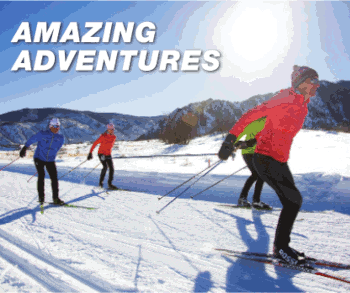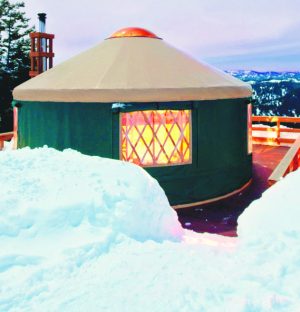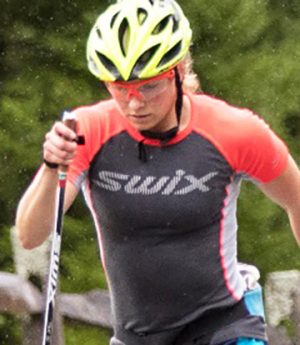December 22, 2010 – Check out the latest from Swix on structure selection for your skis with four different grades of stone grinding. The Norwegian XC team has introduced a color coding system t- select corresponding skis and structure of the glide zone – fine, medium/fine, medium/coarse and coarse:
– Green (-5 °C and colder) Fine
– Blue (0 °C t- -5 °C) Medium/Fine
– White (0 °C to+3 °C -moist): Medium/Coarse
– Red (+1 °C t- +10 °C -wet) Coarse
Fine Structures: Fine structures are mainly used on new snow and fine grained snow. For skating; fine structures are normally used from 0°C (32 °F) and colder for classic;-5 °C (23 °F) and colder. Sharp crystals (present in dry new/fine snow) and a sharp structure is not optimal.
A newly set (fresh) structure will in general give a “sharp” structure. In dry, cold, new and fine snow conditions (usually lower than -7 °C (19°F),the fine “sharp ” structure should be “rounded ” with Fibertex T264 ((or a plexi scraper). Though, this process is normally more important for skating than for classic skiing. On the other hand, in new snow with high humidity close t- 0 °C (32 °F) the structure should preferably be sharper.
Medium/Fine structures: This structure is a widely used structure. For skating it is used in most snow conditions normally from -7 °C (19 °F) up t- wet snow. In very wet conditions a medium/fine structure combined with the use of an imprint tool has proven good results. For classic skiing we recommend this structure in new and fine grained snow (normally between -7 °C (19 °F) and 0 °C (32 °F)).
Medium/Coarse structures: Mainly for classic skiing on coarse moist snow and wet, glazy new snow between 0 °C (32 °F) and +3 °C (37 °F),a medium/coarse structure is preferred. This structure is als- used sometimes in free technique (skating) on wet, coarse-grained snow. In this case, most racers would prefer t- adjust a medium structure towards a more coarse structure by using a manual tool. Reference the table below for specific recommendations.
Coarse structures: This structure is rarely used in skating. For classic skiing it is used on coarse wet snow. Note! In general, it is better t- use a somewhat finer structure than a structure to- coarse.
Practical advice for the use of Swix manual structure toolsLinear, Broken and Screw structures: There are n- exact rules when t- use the different structures. Generally, we can say that linear structure and broken linear structure (V) are mostly used in classic races. Screw and cross-structures often give a good “feeling ” in free technique (skating)races.
Procedure then choosing structure
1 Check snow type, temperature and air humidity.
2. Course is classic or free technique (skating)?
3. Decide the stone-grinding structure.
4. Set the hand-structure as the last step, after brushing.
Use of the different imprint steels will vary with the underlying stone grind. If the base has a fine structure it can be taken t- “medium” by using the coarse imprint steel. In this way you will be able t- make a fine stone grind fit “medium” conditions. However, it is not possible t- make a coarse stone grind ‘fine’ with a ‘fine’ steel.
– Manually produced structure should be set after waxing, application of Cera F and brushing.
– After setting the structure, brush once more with the Blue Nylon brush.
– Always apply manual structures on race day since the intended effect can be reduced over time.
– For skating skis, start from the tip applying light pressure for the first third of the base slowly increase pressure from the front
of the binding using medium pressure until the back of binding, from there t- the tail use firm pressure.
– For classic skis, use even pressure, but preferably lighter pressure on the front part.
– If tw- or more imprint steels are used in combination, always start by using the coarser steel.
– With higher air-humidity, use more coarse structure. When in doubt, use finer hand-structure.
– Finer stone-grinding combined with a “coarse” hand-structure is better than coarse stone-grinding, combined with ”finer ”
hand–structure.
– On wet snow conditions, apply harder pressure on the tool.
– Run the rollers tw- times.
– Keep the rollers and steels clean and well protected during transport.
Read more HERE.






![National camp action [P]...](https://skitrax.com/wp-content/uploads/2019/08/Duluth-4-2019-08-08-at-10.46.51-AM-300x246.png)
![Matt Liebsch on the CXC Elite Team [P] CXC...](https://skitrax.com/wp-content/uploads/2019/08/Matt-Liebsch-CXC.2-525x700.4-300x267.jpg)
![Dan LaBlanc [P]...](https://skitrax.com/wp-content/uploads/2019/08/Dan-LaBlanc-img_1855.3.jpg)

![Swix Structure Selection. [P] Swix](http://skitrax.com/wp-content/uploads/2010/12/Swix-Structure-Selection.2.jpg)